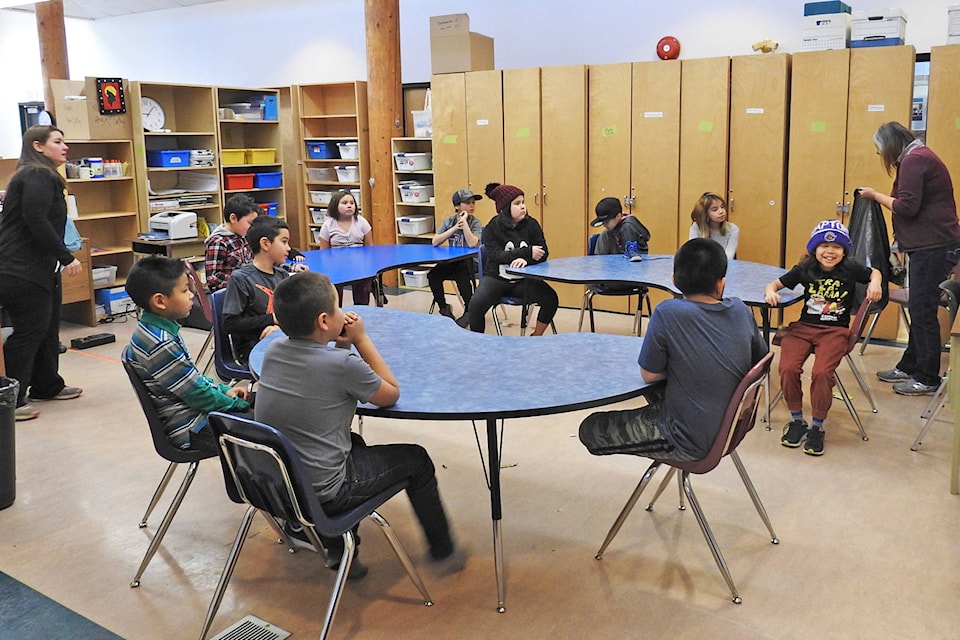Three weeks after a major flood shut down Moricetown Elementary and Secondary School (MESS), staff and students seem to be adapting well.
Within the first week, all staff had found a workable temporary space, either in the adjoining Multiplex, in a corner of the Small Feast Hall, or in one of the local church buildings. Whatever school supplies and furniture could be salvaged were quickly moved into the new space and lesson plans were modified as needed. The children were back in class the following Monday.
Vice principal Aaron Burgess calls it “the new reality,” suggesting that with the renovation and remediation work necessary at the school, classes may continue in this temporary model until the end of the year.
“You can’t deny that it’s stressful to the staff, taking everything you ever had in the classroom and to move it all to another setting,” Burgess said.
When asked how the children are handling it, he laughs. “The kids are more resilient than adults … There was some stress but they’re showing how resilient they can be.”
“Once you’ve got a routine with the children, you just move forward,” said teacher Antoinette Austin.
Burgess agreed with that analysis.
“The good thing about our school is that we’ve had such routines and such structure-based lessons … The routines that have been established have helped [the children] adjust,” he said.
Two days after the flood, the staff were gathered together to put a plan in place. While others were in a state of shock, teaching assistant Gabriela Holt made an insightful comment.
“Couldn’t we see this as an opportunity?” she asked.
At the time, she was wondering whether classrooms — that would have to be rebuilt anyway — might be redesigned to better fit the needs of the current teachers.
When I asked Amanda Lewis, the Witsuwit’en Language and Culture teacher, her immediate response was, “I agree with Gabriela because we could feel like ‘Oh my goodness, I can’t believe we’ve been displaced!’ But we have a fresh start. We have a new beginning, which I think is really amazing.
“I think it’s reflective on the whole Kyah Wiget Education Society, with our new board, with the new direction we’re trying to point KWES in: there’s a rebirth here, even for the elementary school, and I think it will just ripple out to the whole Society. I really agree with that whole positive outlook. Sometimes there’s a little bit of growing pains to get there, but if we didn’t go through those, we wouldn’t be as strong as we need to be.”
“We’re a strong Witsuwit’en people, and as strong Witsuwit’en people, when challenges come our way, we don’t just sit down and say, ‘Boo Hoo!’ If the snow falls, you’ve got to shovel it. When the water falls, you got to figure out a way to dry it up and make a way for life to keep on happening.
“We’ve done that with our classes: we’ve found places to make sure that our children are still successful. Looking forward to our new school, we can think, ‘Wow! What positive things can come when we move into our new space!’ I’m thankful that we can look at it this way, positively.”
The Band staff also share space with some of the smaller classes. Right next door to me is an occasional temporary classroom, where children come to spend an hour or so with teaching assistant Lori-Ann Groves. Having the children in our space brings a lot of positive energy with it.
Most mornings, when I walk past their room a cheerful young voice calls out, “Good morning, Christine!”
That has to be one of the best ways to start a work day.
– Christine Bruce is the communications coordinator for Witset First Nation.
